
The first time I drove the Dodge Challenger wasn’t back in the summer of ’71 (I wasn’t event born yet) and, no, it wasn’t an original coupe from the last days of the penultimate muscle car era. But it feels like just yesterday that I and the then-new 2009 Challenger SRT bonded on the high-performance test track during AJAC’s annual “TestFest” event.
In actuality, it was fall 2008, and the big, orange Dodge’s 425-horsepower 6.1-litre Hemi V8 could steer its big, fat rear end through the slalom portions of the track, and then fire it like a gunshot down the long straightaway with 420 lb-ft of wallop. The voluminous cockpit made me feel like an ant piloting a tank - one with a gargantuan shift knob and tiny windows.
Fast-forward to today and the Challenger SRT has changed quite a bit. It is more refined inside and out, and better in practically every respect. And although it has gained a new moniker, almost nowhere on this car will you find the word “Hellcat.” There is an SRT Hellcat badge on the cover of the all-new supercharged 6.2-litre Hemi V8, and the front quarter panels proudly display the word “Supercharged.”


Developing a whopping 707 horsepower and 650 lb-ft of torque, not only is this engine the most powerful V8 that Chrysler Group LLC has ever produced, it is also the first production V8 to be supercharged. A forged steel crankshaft, powder-forged connecting rods, high-load bushings, diamond-like carbon-coated piston pins and high-strength forged alloy pistons are just a few of the upgrades here, but SRT has gone through the whole car looking for ways to improve it.
It doesn’t happen magically. “You have to plan for all the stuff we did,” says Daryl Smith, SRT engineering. “We had to upgrade the trans, both transmissions, a new clutch, the driveline. We put a 230 mm brand new rear end on the car, the half shafts that go with it and all the way through.”
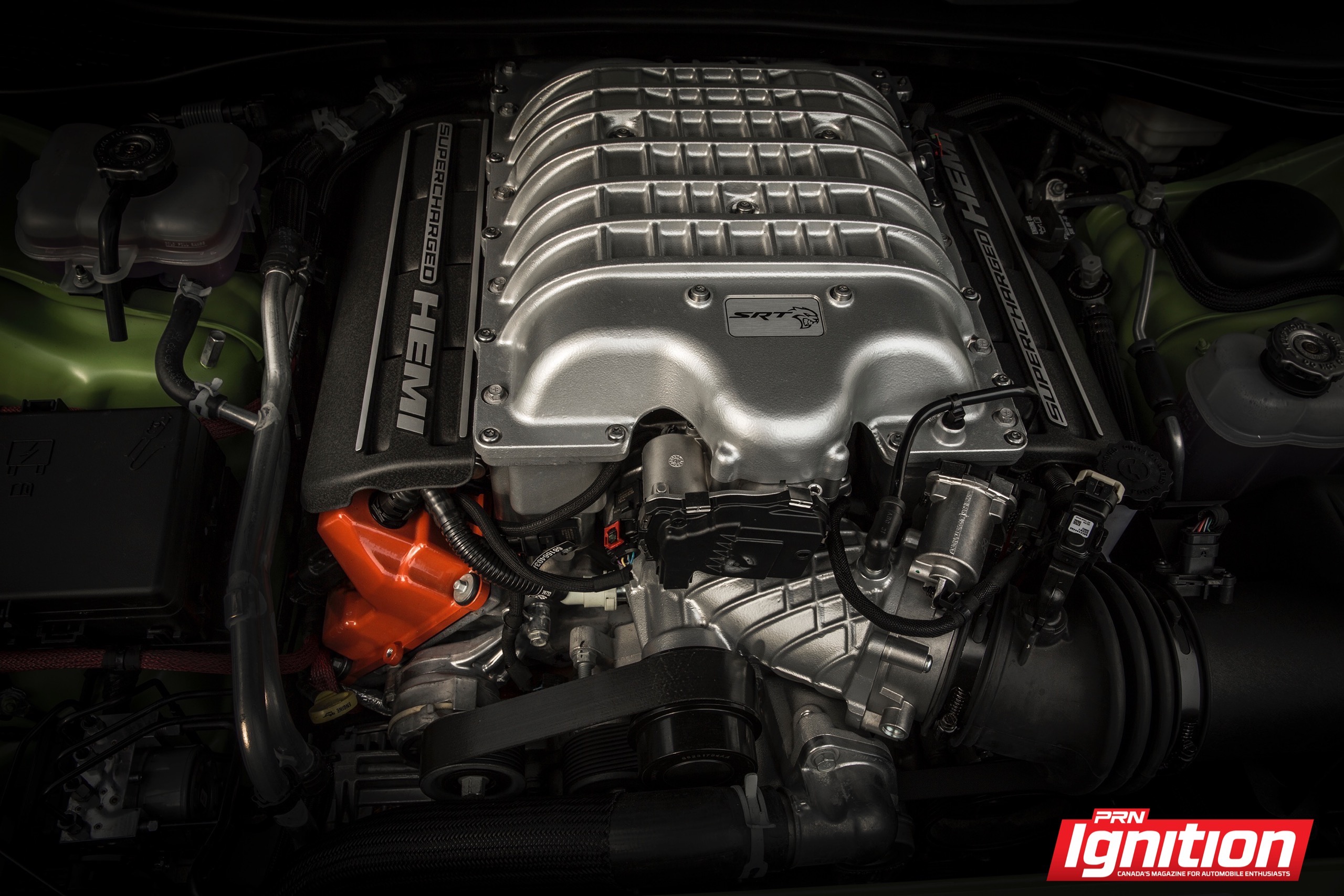
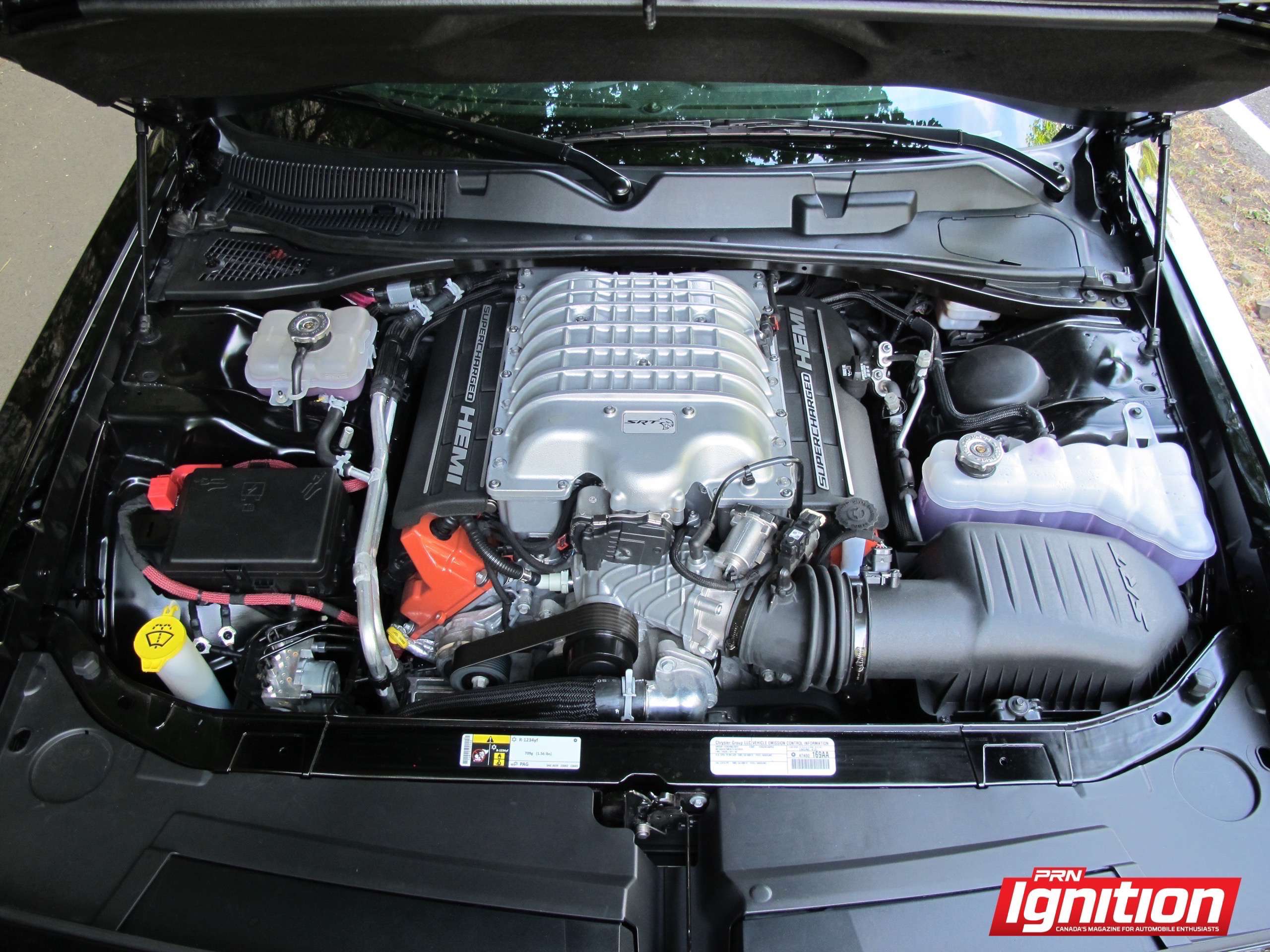
Each Hellcat comes with three key fobs: two red and one black. The latter caps performance at 500 horsepower, however, the red key unlocks all 707 horses and torque potential via improved pedal response and throttle mapping. There is also valet mode that dramatically cuts the power and works with either key (which do provide similar performance up to 500 horsepower) by simply punching a four-digit code into the computer.
Although a total redesign is still a year or two down the road, the entire 2015 Challenger lineup has been privy to some noticeable enhancements. All welcome.
Built at Chrysler’s Brampton, Ontario assembly plant, the 2015 Challenger is available in eight trim levels: SXT, SXT Plus, R/T, R/T Shaker, Scat Pack, Scat Pack Shaker, SRT 392 and SRT Hellcat. Depending on the model, a 3.6L Pentastar V6 and a slew of V8s are available.
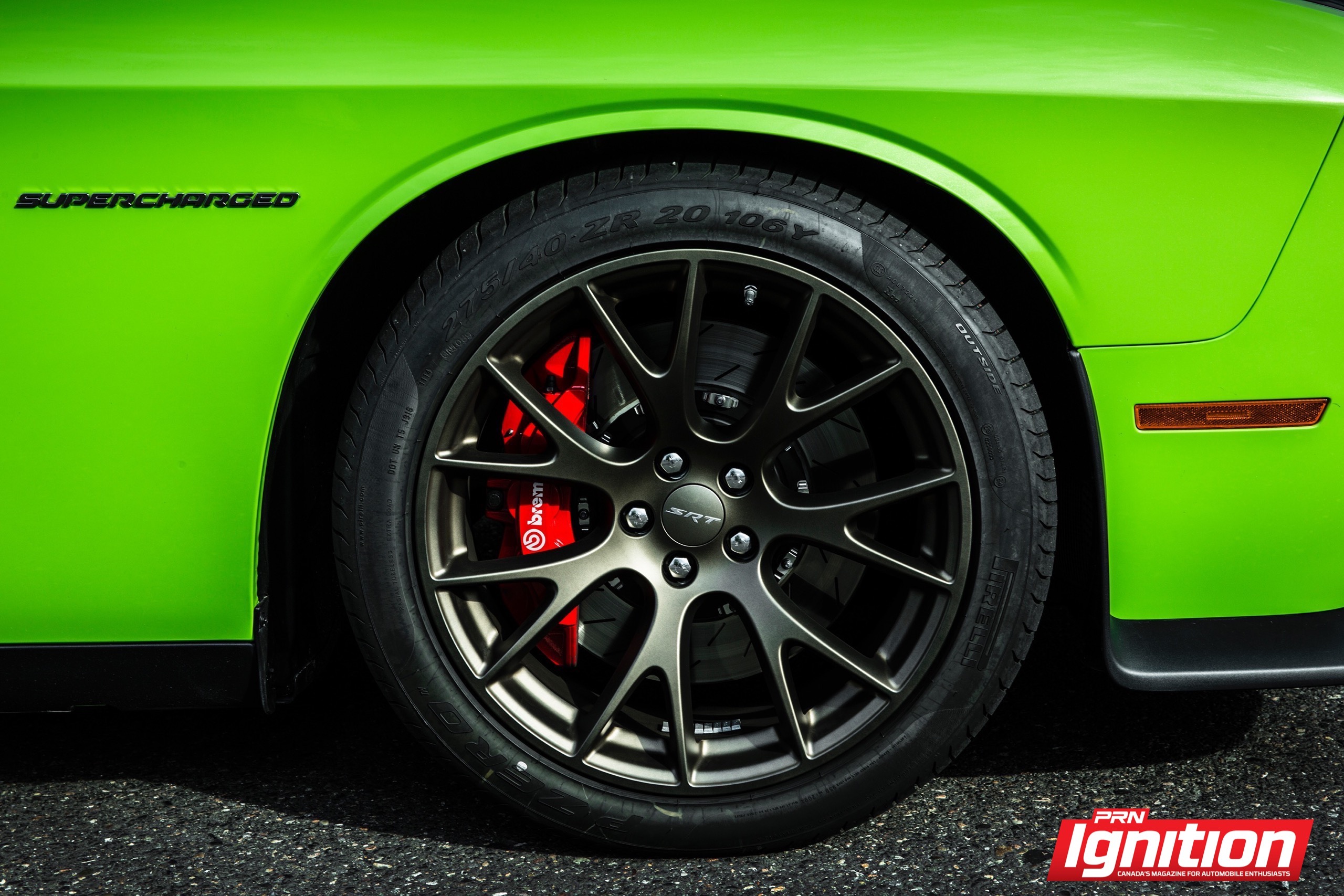 Outwardly, the latest Challenger comes with a new front fascia design, an all-new split grille and a more pronounced power-bulge aluminum hood. These aren’t just for show either. The tri-vented hood design comes by way of the Viper, and it boasts a dedicated cold air intake vent that’s in addition to the Hellcat-exclusive ram air intake neatly hidden in plain sight inside the passenger-side parking lamp. The lower grille is designed to come out easily to improve engine cooling for would-be track warriors, too.
Outwardly, the latest Challenger comes with a new front fascia design, an all-new split grille and a more pronounced power-bulge aluminum hood. These aren’t just for show either. The tri-vented hood design comes by way of the Viper, and it boasts a dedicated cold air intake vent that’s in addition to the Hellcat-exclusive ram air intake neatly hidden in plain sight inside the passenger-side parking lamp. The lower grille is designed to come out easily to improve engine cooling for would-be track warriors, too.
Halo HID headlights adorn the front end while the rear gets split LED taillights along with a unique, taller SRT spoiler. The subtle 1971 Challenger-inspired exterior enhancements carry over to the cockpit, which features a driver-focused layout that interfaces with a larger 8.4-inch Uconnect touchscreen multimedia centre and new seven-inch customizable in-cluster display that brings added convenience to this modern muscle car. Other Hellcat cabin enhancements include high-performance seats, a flat-bottom steering wheel with thumb bumps and larger paddle shifters, and red signature cluster face.
Driving Impressions

The drive route starts in downtown Portland and heads east running alongside the Columbia River before crossing the Bridge of the Gods into Washington Stage and turning back west on the Lewis and Clark Highway (Hwy. 14).
You might think a car with such power would be a handful on public roads, but that isn’t the case. It isn’t the least bit skittish on smooth pavement; it’s perfectly happy to settle into a gear and cruise until the heart is content. The solid rear axle does add some excitement and a bumpier ride, but on the whole it purrs softly like a normal, domesticated house kitty most of the time rather than a feral cat.
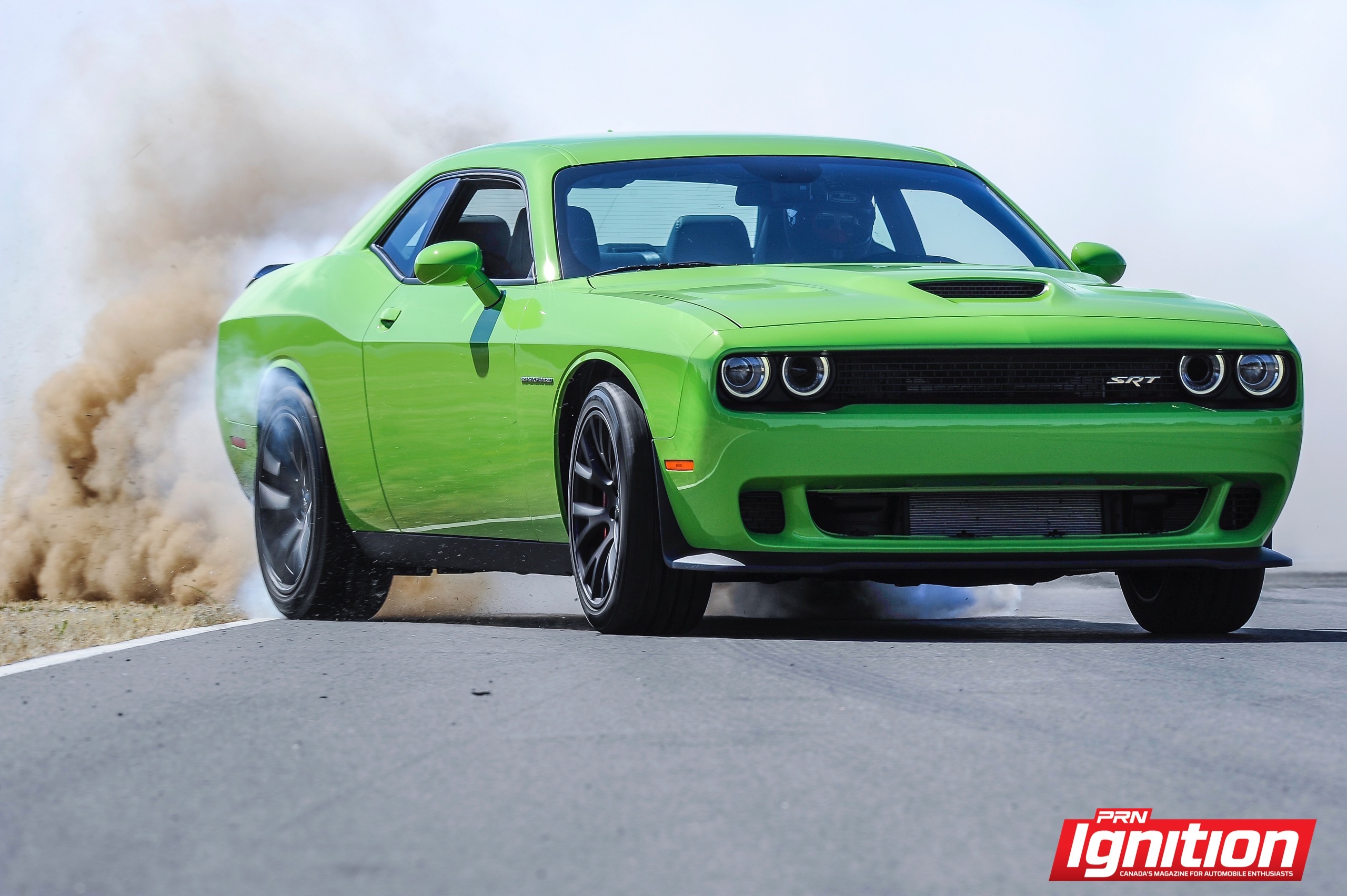

The SRT-tuned three-mode adaptive damping system suspension ensures the car can be set up the way you like. Four available drive modes – default, sport, track and custom – allow for the individual control of the horsepower, transmission shift speeds, steering, paddle shifters, traction and suspension. Sport mode provides a sporty but compliant ride over the default mode. Body roll is not really an issue as the chassis is quite stiff, even in the normal mode. Track mode does firm up the SRT-tuned Bilstein dampers automatically for maximum handling, so it’s fortuitous that Portland International Raceway (PIR) is my ultimate destination for the day. That hulking body is a bit livelier on the 12-corner, 3.17-kilometre long PIR road course where Dodge has brought out a stacked lineup of Challengers to “go out and have some fun” with. We’re starting from the PIR dragstrip, which spills out onto the front straight, so the first thing to note is braking as the Hellcat has already climbed to 220 km/h before those 390-mm, six-piston front and 330-mm, four-piston rear Brembos have to do any work. No worries though as they are capable of stopping the car from 97 km/h in 33.2 metres (109 feet) according to independent tests. Despite constant and heavy abuse from several drivers, the brakes fared particularly well and managed to resist warping and fade for the better part of the day.
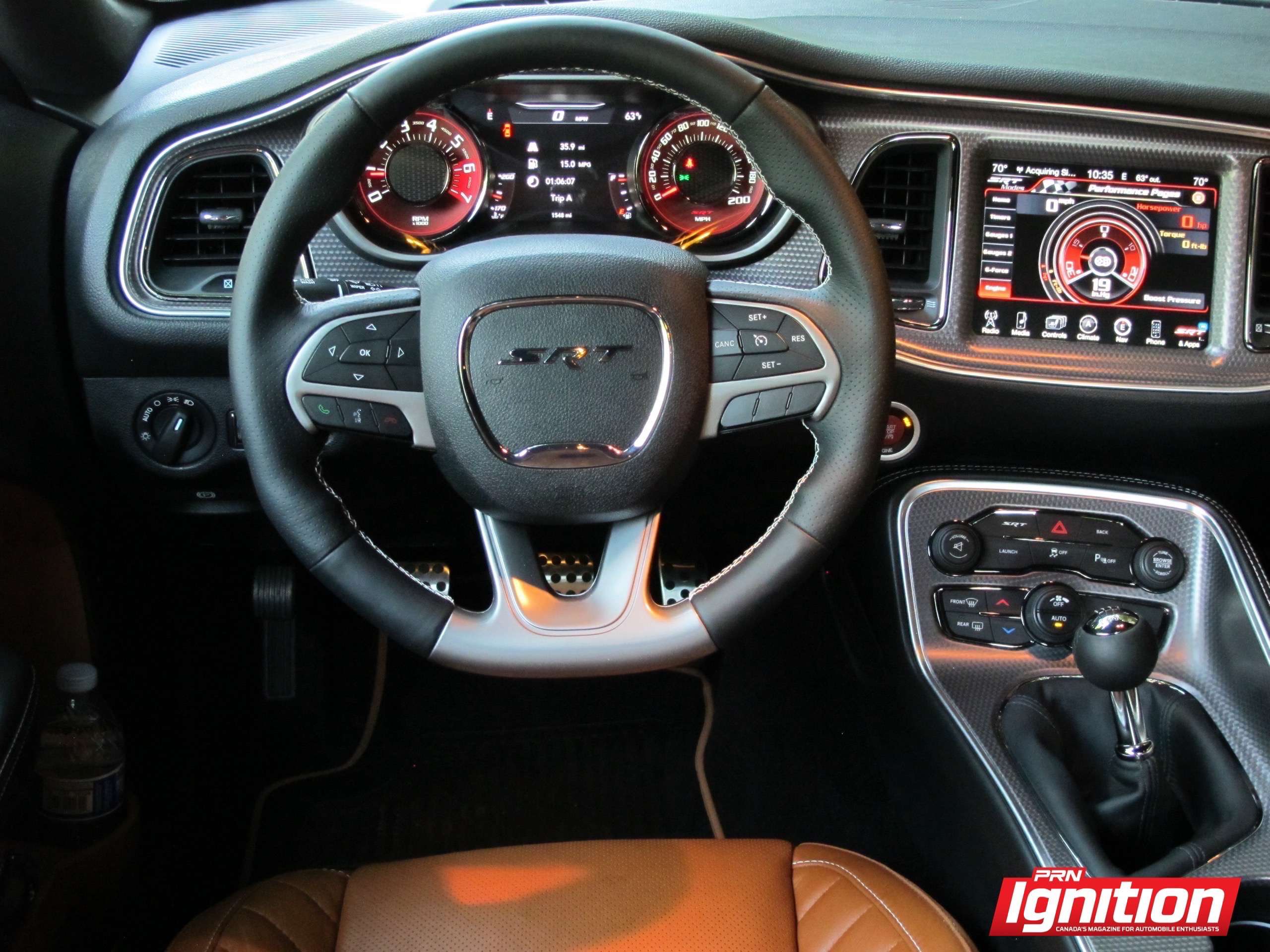

The standard six-speed Tremec TR-6060 manual (carried over with enhancements) more than holds its own paired with a twin-disc clutch. An eight-speed TorqueFlite automatic transmission with paddle shifters is also available on SRT models (the “392” has a naturally-aspirated 6.4-litre Hemi V8 producing 485 horsepower and 475 lb-ft).
Hydraulic power-assisted steering (not available on the 392) empowers the driver with great feedback and control. And thanks to its performance-tuned asymmetric limited slip differential, the Hellcat pulls a full G in most corners. It is predictable when getting back onto the throttle to attack the front and back straights, and it goes from 80 to 200 km/h in about 12 seconds, according to the AiM Smarty Cam logger I had hooked up – my fastest recorded lap is 1:34.67, but there’s no reason I couldn’t shave five or more seconds with some practice.
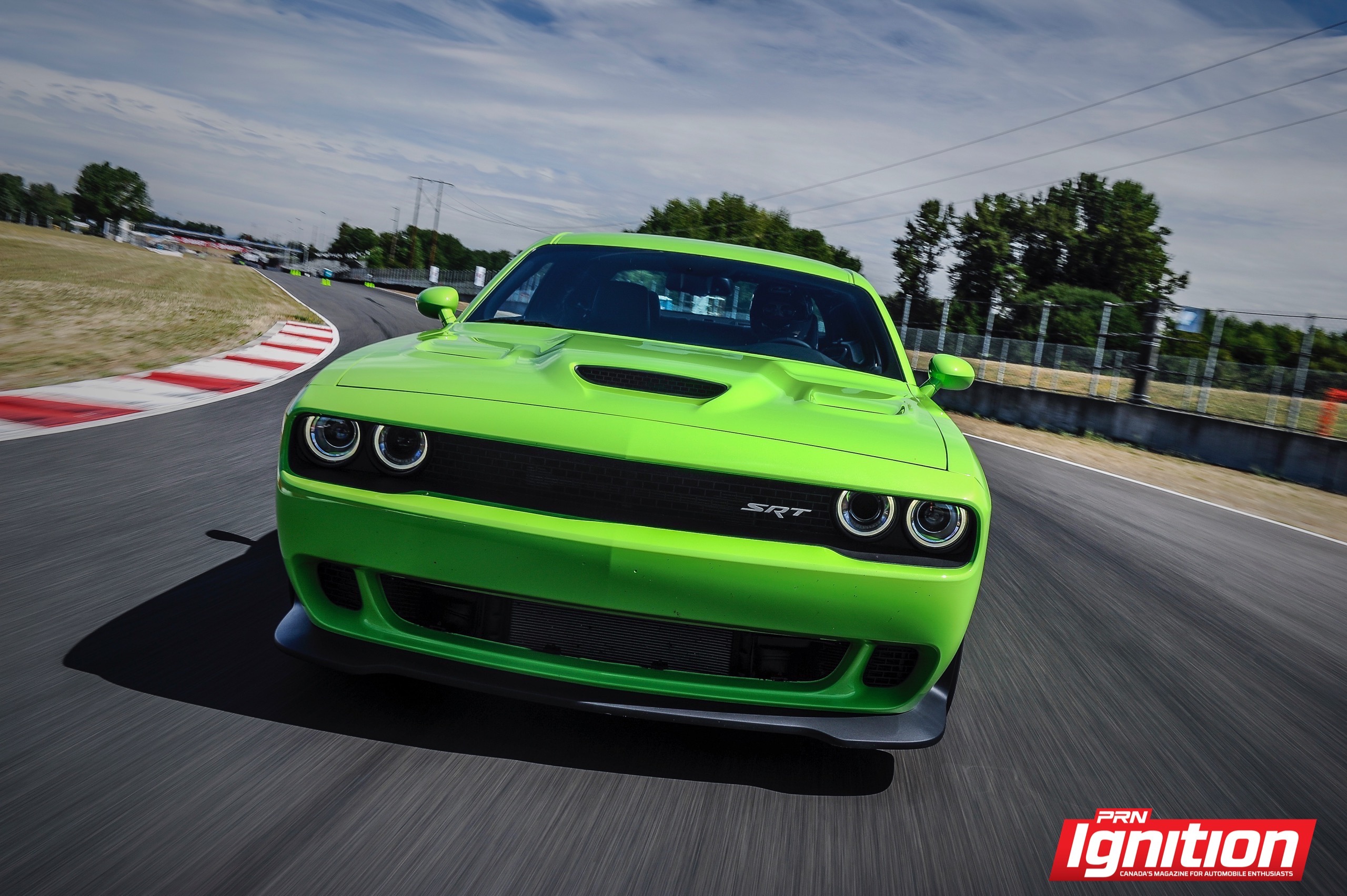 |
 |
Did I mention the SRT Hellcat is fast as hell? Well, it is, and it does 0-100 km/h in roughly 3.8 seconds with a top speed of 328.3 km/h (204 mph). In experienced hands, it is capable of big, long smoky burnouts that would make even the most seasoned track marshals / officials blush. The National Hot Road Association (NHRA) has certified the Hellcat’s quarter-mile capabilities on both street legal drag radials and on the Pirelli P Zero production tires: 10.8 seconds at 202.8 km/h (126 mph) and 11.2 at 201.2 km/h (125 mph), respectively. The built-in SRT Performance Pages app estimates my best effort on the PIR dragstrip at 12.1 seconds and 186.7 km/h (116 mph), and that is using the launch control feature.
Sixty-four-thousand is not too much for Dodge to ask for the SRT Hellcat. It might just be too little, actually. It doesn’t drive like a tank anymore and the cockpit has been improved in spades. It is worth every dollar, and if having the ultimate performance muscle car is your thing, there are few cars with horsepower-to-dollar ratios as good as this.
ESSENTIALS
2015 Dodge Challenger SRT Hellcat
Base Price: $63,995
Engine: 6.2L supercharged Hemi V8
Horsepower: 707 hp @ 6,000 rpm
Torque: 650 lb-ft @ 4,0000 rpm
Dry Weight: 1,795 kg
Configuration: FR
Transmission: 6-speed manual
Tires: Pirelli P Zero (275/35 R19 front, 255/30 R19 rear)
Fuel Economy Ratings (city / hwy.): TBA L/100 km
Warranty (mos / km): 36 / 60,000






















